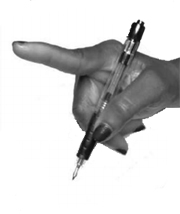Genetics
Heterozygous mutations in the GNAL gene (guanine nucleotide-binding protein alpha-activating activity polypeptide, olfactory type (Gα(olf)), cause cervical or cranial dystonia with a mean onset in the thirties1. About 30 different GNAL mutations have been reported in dystonia patients, including missense mutations and nonsense variants. The sequence variants identified vary greatly and include in-frame deletions, frameshifts, missense, nonsense, splice-site mutations, and variants that are predicted to result in nonsense-mediated decay.
Pathophysiology
Mode of Inheritance
GNAL mutations seem to be highly but not fully penetrant, with an autosomal dominant pattern of inheritance.
A homozygous GNAL missense mutation (p.R329W) was found in siblings with childhood-onset generalized dystonia and mild intellectual disability: biallelic mutations in GNAL may therefore occur but appear to cause a more severe phenotype.
Clinical Presentation
Mean age at onset is about 40 years; however, a wide range of 7–68 years of age is reported2. This is a predominantly craniocervical form of dystonia with symptom onset typically in the neck. Craniofacial, laryngeal and axial dystonia is less common2.
The majority of affected individuals also had disease progression to other muscle groups3.
Speech involvement was commonly reported, but not brachial dystonia, distinguishing them from DYT-THAP1 patients.
Treatment
Botulinum toxin is reported to have variable outcomes; deep brain stimulation is an effective treatment option.

